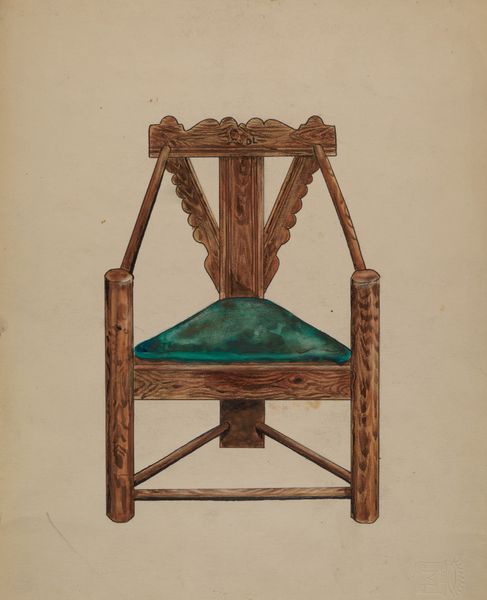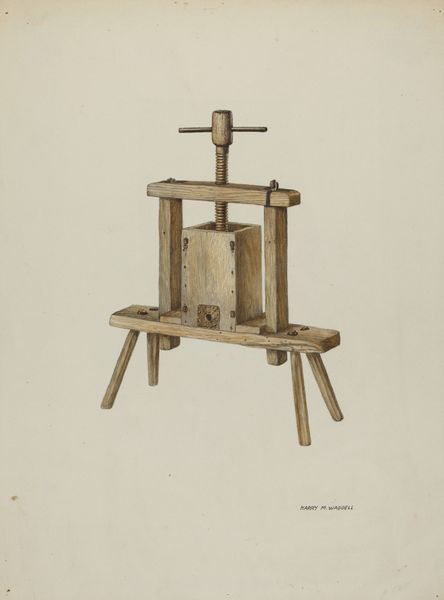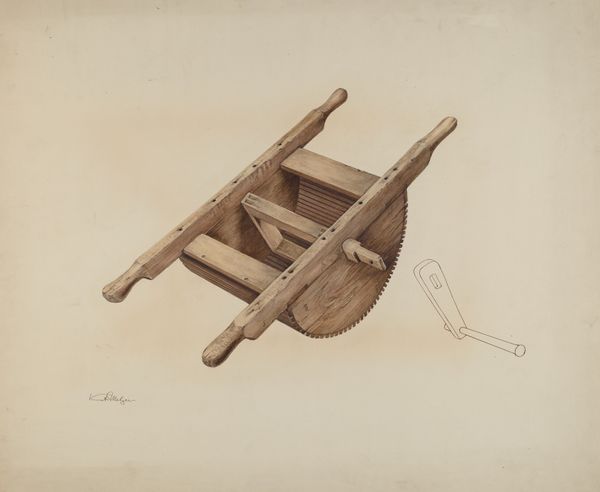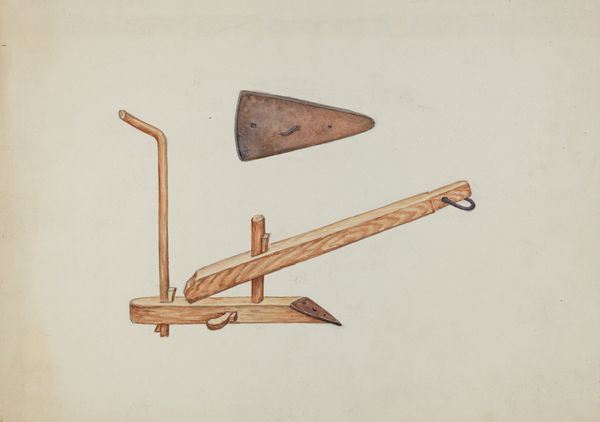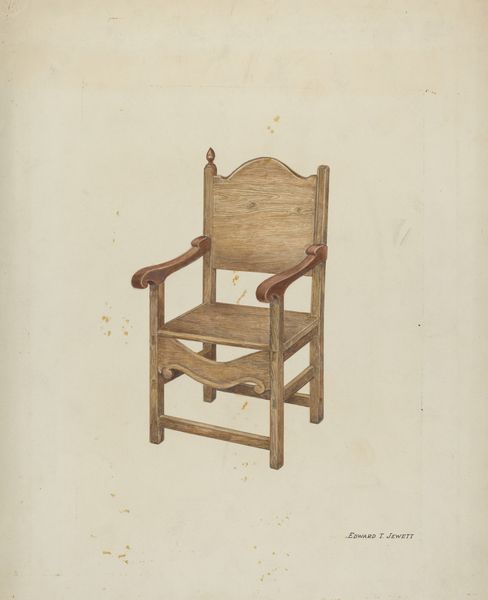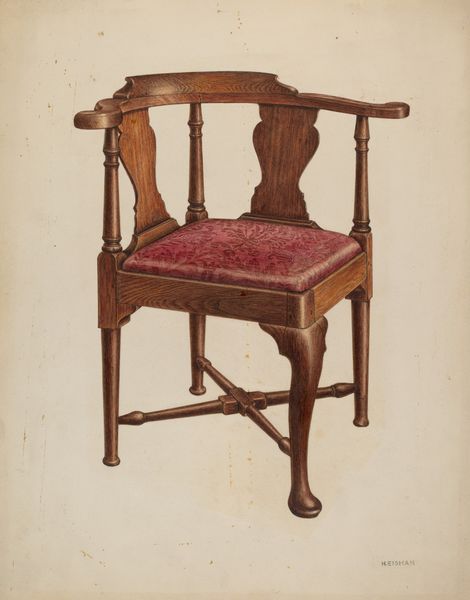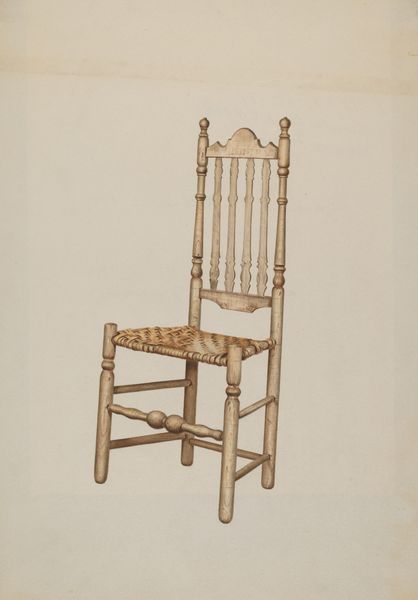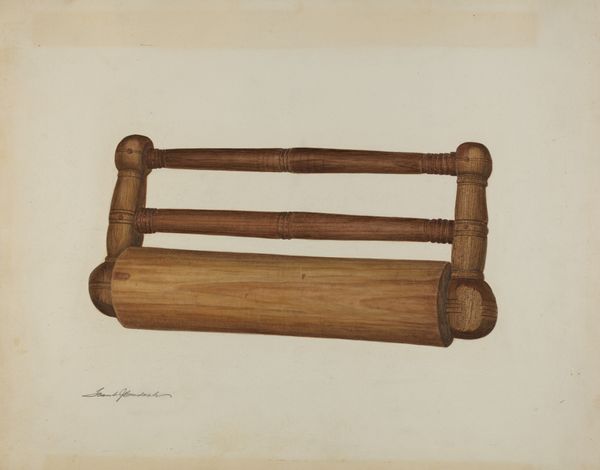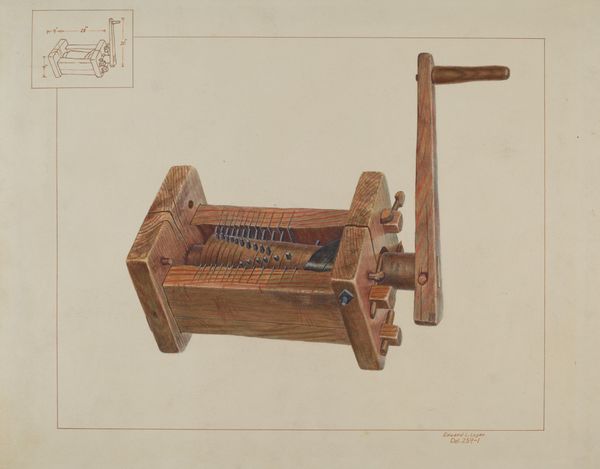
drawing, watercolor, wood
#
drawing
#
watercolor
#
wood
#
academic-art
#
watercolor
Dimensions: overall: 35.6 x 45.8 cm (14 x 18 1/16 in.) Original IAD Object: overall: 17 1/2" high; bench: 24" long; 6 1/4" high; press: 11 1/4" long; 6 1/2" high; 4 1/8" wide; mold: 3" high; 4 1/2" wide; 1 1/2" long
Copyright: National Gallery of Art: CC0 1.0
Curator: Edward L. Loper, an American artist, crafted this piece around 1940. What strikes you immediately about it? Editor: Simplicity, I’d say. A nostalgic aura, almost romanticizing rural life. What’s the medium used in this particular rendering? Curator: The primary medium is watercolor, skillfully combined with drawing to delineate the forms. Though I think wood may have also been incorporated in some manner. Its formal style seems aligned to an academic tradition, don't you think? Editor: Indeed. The image presents more than just the wooden butter mold; it invokes archetypal symbolism—the earthiness, the nourishment… Butter carries significant cultural weight, representing abundance and comfort across numerous cultures. Do you see that manifesting? Curator: Yes, certainly. This artwork embodies the historical reverence for everyday objects, giving dignity to the implements of home. In this specific instance, this "Butter Mold" exemplifies a very strong connection to early industry and production in America, when more commonplace and 'simple' designs were prevalent. This imagery plays into notions of tradition and authenticity. Editor: Absolutely, there is something honest about it. Look at how he rendered the wood grain—each knot seems deliberate, lending an aura of authenticity. You mentioned that Loper was the artist; what exactly can you share about him, as an artist overall? Curator: Loper was celebrated for painting familiar scenes and objects around him in Delaware, and seemed preoccupied by light and capturing his familiar, yet sometimes obscured, surroundings. There is a specific appeal that has led his art to endure throughout the modern day, and why his works like "Butter Mold" can command such profound artistic impact, decades later. Editor: Agreed. This painting, so quiet and straightforward, carries the memory of countless kitchens and harvests. A tribute, perhaps, to a bygone era. Curator: A connection to those bygone ways of living seems particularly potent. We are, in a sense, looking into a preserved moment. Editor: Well, examining Loper's artwork really made me consider how common objects around our history often hold a hidden artistic impact, one worth remembering for the long term. Curator: It's the sort of thing that pushes me to reconsider our historical and modern connection. It's fascinating!
Comments
No comments
Be the first to comment and join the conversation on the ultimate creative platform.
